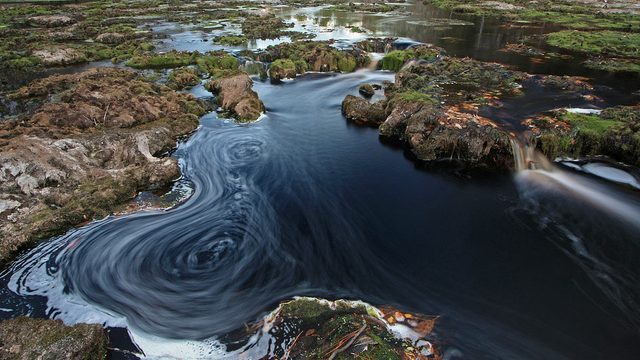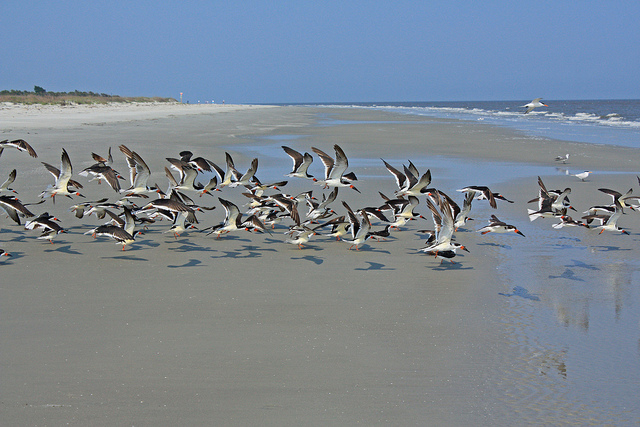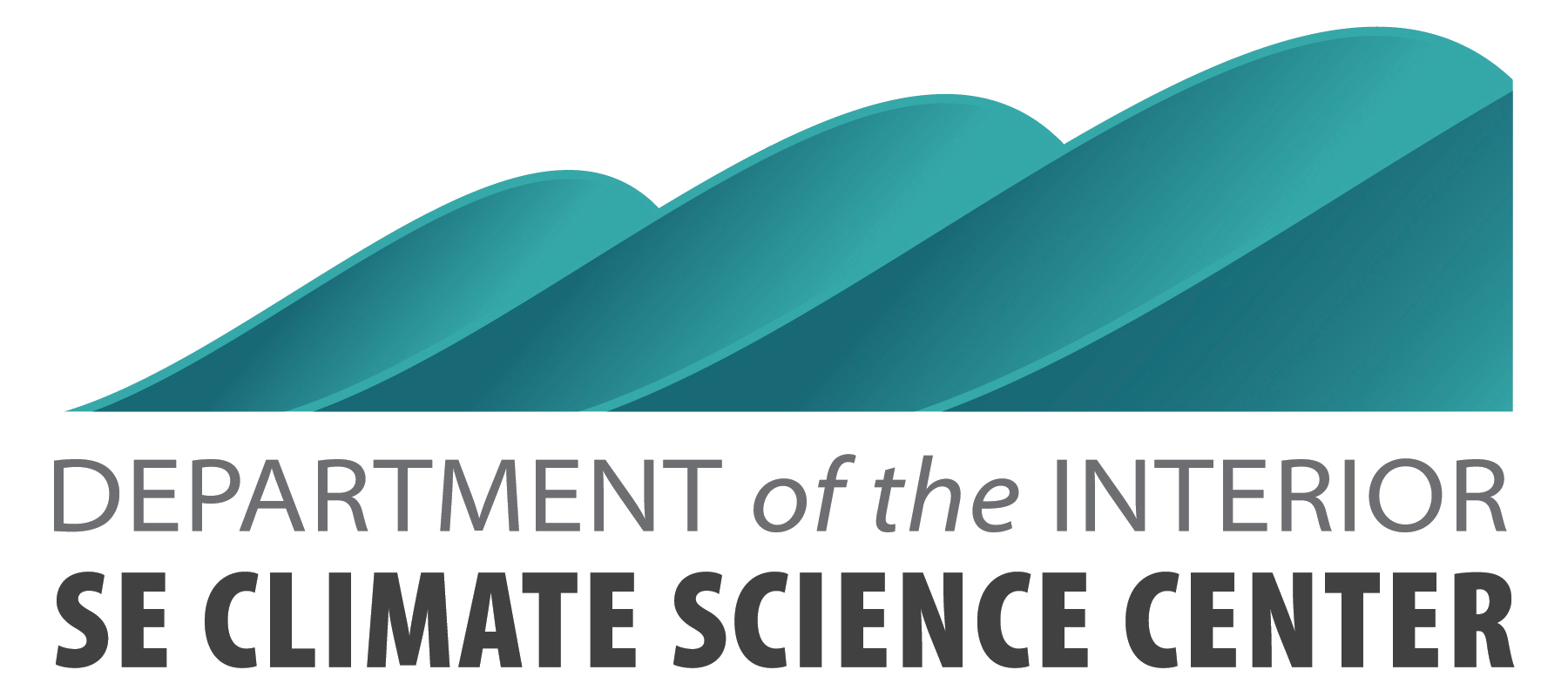December 2017 Newsletter

December 2017 Newsletter
Welcome to the Southeast Climate Science Center’s December 2017 Newsletter.
In this newsletter you will find:
SE CSC News
Resources
Notable Publications
Tribal News
Partner News
Webinars
Upcoming Events
Opportunities
For news and upcoming events related to the Southeast Climate Science Center subscribe to our monthly newsletter.
[divider]

Southeast Climate Science Center News
New Collaboration to Support Hurricane Research. The 2017 hurricane season has heavily impacted many Caribbean countries and coastal U.S. states. Southeast CSC along with North Central CSC and USGS Earth Resources Observation and Science Center are joining to study hurricane impacts on landscape changes and hydrology in Puerto Rico and the U.S. Virgin Islands. Learn more.
Connecting Science and Culture For Future Generations. A profile story on Faculty Affiliate Ryan Emanuel was published by NC State Office for Institutional Equity and Diversity. Read the post.
Congressional Representative David Price, who represents the 4th Congressional District of North Carolina, where the SE CSC is headquartered, recently visited our offices at NC State to learn more about our applied science and capacity building activities. Read more.
Latest from Conservation Corridor: Habitat conservation alone cannot fully protect species from the effects of climate change.
Climate Adaptation Knowledge Exchange. Several articles from research by SE CSC PI Erin Seekamp have been added to their virtual library. Connect to Library.
New publications by SE CSC researchers, Global Change Fellows, and Faculty Affiliates:
Hain, E.F., J.G. Kennen, P.V. Caldwell, S.A.C. Nelson, G. Sun, and S.G. McNulty (2017), Using regional scale flow–ecology modeling to identify catchments where fish assemblages are most vulnerable to changes in water availability. Read the paper. See project information.
Miao, G., A. Noormets, J.-C. Domec, M. Fuentes, C.C. Trettin, G. Sun, S.G. McNulty, J.S. King. (2017), Hydrology and microtopography control carbon dynamics in wetlands: Implications in partitioning ecosystem respiration in a coastal plain forested wetland. Read the paper.
Enquist, C.A.F., S.T. Jackson, G.M. Garfin, F.W. Davis, L.R. Gerber, J.A. Littell, J.L. Tank, A.J. Terando, T.U. Wall, B. Halpern, J.K. Hiers, T.L. Morelli, E. McNie, N.L. Stephenson, M.A. Williamson, C.A. Woodhouse, L. Yung, M.W. Brunson, K.R. Hall, L.M. Hallett, D.M. Lawson, M.A. Moritz, K. Nydick, A. Pairis, A.J. Ray, C. Regan, H.D. Safford, M.W. Schwartz, and M.R. Shaw (2017), Foundations of translational ecology. Read the paper.
Schwartz, M.W., J.K. Hiers, F.W. Davis, G.M. Garfin, S.T. Jackson, A.J. Terando, C.A. Woodhouse, T.L. Morelli, M.A. Williamson, and M.W. Brunson (2017), Developing a translational ecology workforce. Read the paper.
Littell, J.S., A.J Terando, and T.L. Morelli (2017), Balancing research and service to decision makers. Read the paper.
Costanza, J.K., J.W. Coulston, and D.N. Wear (2017), An empirical, hierarchical typology of tree species assemblages for assessing forest dynamics under global change scenarios. Read the paper.
Martin, K.L., T. Hwang, J.M. Vose, J.W. Coulston, D.N. Wear, B. Miles, and L.E. Band (2017), Watershed impacts of climate and land use changes depend on magnitude and land use context. Read the paper.
All of us at the Southeast Climate Science Center wish you a peaceful holiday season and prosperous new year.
[divider]

Resources
NY Times 2017: The Year in Climate. Learn more.
14 Solutions to Problems Climate Change Poses for Conservation. The report describes 14 innovative “real-world” solutions to impacts on wildlife and ecosystems worldwide. The solutions profiled include both traditional and new conservation tools applied strategically to adapt to climate-driven impacts such as decreasing water availability, increasing risk of flooding and wildfires, rising sea levels, direct effects on species and habitats, and changing land use and human behaviors. Learn more.
Coastal Resilience. This website provides an online decision support system, including a visualization platform where ecological, social, and economic information can be viewed alongside sea level rise and storm surge scenarios. This public-private partnership led by TNC seeks to identify nature-based or green infrastructure solutions, where coastal communities can increase their resilience by effectively protecting, restoring and sustainably managing their natural resources while strengthening local capacity for climate adaptation. Apps are used to simplify complex relationships or models, convey a specific ecological or social concept, or used to compare different future condition scenarios. Learn more.
Science of Science Communication III: Inspiring Novel Collaborations and Building Capacity, third of a National Academy of Sciences Arthur M. Sackler Colloquia series, explored ways to build capacity for and foster the use of evidence-based strategies for engaging the public with science and ensuring its appropriate use. Recorded presentations are available. Learn more.
2017 World Meteorological Office Greenhouse Gas Bulletin reports on the state of greenhouse gases in the atmosphere based on global observations through 2016. This latest analysis of in-situ observations from the Global Atmospheric Watch Programme shows that globally averaged surface concentrations for carbon dioxide (CO2), methane (CH4), and nitrous oxide (N2O) reached new highs in 2016, with CO2 at 403.3 ± 0.1 ppm, CH4 at 1 853 ± 2 ppb and N2O at 328.9 ± 0.1 ppb. Learn more.
The Refugia Research Coalition portal brings together natural resource managers and scientists who are interested in using (or just learning more about) climate change refugia management as a tactic for conserving species. Learn more.
FEATURED IMAGES
U.S. EPA 2017 Gulf Guardian Award. The Isle de Jean Charles Band of Biloxi-Chitimacha-Choctaw is in the process of resettling their community further inland because of substantial coastal land loss, after two years of planning and with some funding from HUD. This video describes their process, for which the tribe won 1st place in the category of Environmental Justice/Cultural Diversity. Link to video.
As Climate Changes, Southern States Will Suffer More Than Others. Based on a Science article that calculates economic effects of climate change, this map displays predicted damage in 2080 to 2099 as percentage of county G.D.P. per year. New York Times, June 29, 2017. Link to article.
2017: Year of severe storms fueled by rising seas. ‘This is Not Cool’ video by Yale Climate Connections describes rising sea levels and the memorable severe storms of 2017. Link to video.
[divider]

Notable Publications
Explaining Extreme Events of 2016 from a Climate Perspective
In this sixth edition of Special Supplement that explains extreme events of the previous year from a climate perspective, authors found for the first time that some extreme events were not possible in a pre-industrial climate. The events – the 2016 record global heat, the heat across Asia, and a marine heat wave off the coast of Alaska — show that the influence of human-caused climate change has become sufficiently strong to push events beyond the range of natural variability alone. Several papers deal with “impacts attribution,” investigating whether climate change’s influence on the extreme event can subsequently be directly tied to a change in risk of the socio-economic or environmental impacts. Other extreme weather event types in the report include ocean heat waves, forest fires, snow storms, and frost, as well as heavy precipitation, drought, and extreme heat and cold events over land. Twenty-one of the twenty-seven papers in this edition identified climate change as a significant driver of an event, while six did not. Link to Supplement.
Migration induced by sea-level rise could reshape the US population landscape
Many assessments of sea-level rise (SLR) focus on vulnerable coastal communities but no studies have yet attempted to model the destinations of people who are potentially displaced. This research merges projected populations at risk of SLR with migration systems simulations to project future destinations of SLR migrants in the U.S., resulting in a finding that SLR will reshape future population distributions. This will potentially stress landlocked communities unprepared to accommodate this wave of coastal migrants—even after accounting for potential adaptation. Link to article.
Reductions in global biodiversity loss predicted from conservation spending
Authors present an evidence-based model that shows how conservation spending quantitatively reduces the rate of biodiversity loss. Model results show that conservation investments between 1996 and 2008 decreased biodiversity loss in 109 countries who are signatories to the Convention on Biological Diversity and Sustainable Development Goals, by a median average of 29% per country. Biodiversity changes can be predicted with high accuracy, using a dual model that incorporates simultaneous effects of conservation investment and those of economic, agricultural, and population growth (human development pressures), They find that the impact of spending decreases as human development pressures grow, which implies that funding may need to increase over time. Link to article.
The Ecology of Soil Carbon: Pools, Vulnerabilities, and Biotic and Abiotic Controls
Soils hold the largest biogeochemically active terrestrial carbon pool on Earth and are critical for stabilizing atmospheric CO2 concentrations. Soil organic matter (SOM) anchors global terrestrial productivity and food and fiber supply. Land use changes and unsustainable forest and agricultural practices have caused soil carbon stocks to be widely lost or degraded. This annual review evaluates the state of knowledge for the stocks of, inputs to, and outputs from SOM around the world. Global uncertainties in the amounts and locations of SOM include the extent of wetland, peatland, and permafrost systems and factors that constrain soil depths, such as shallow bedrock. Accounting for these uncertainties, global soil organic carbon (SOC) stocks at depths of 2 and 3 m are estimated to be between 2,270 and 2,770 Pg, respectively, but could be as much as 700 Pg smaller. Sedimentary deposits deeper than 3 m likely contain >500 Pg of additional SOC. Link to article.

Tribal News
Paid Summer Research Internship Opportunity – SOARS Program. SOARS is an undergraduate to graduate research internship program for students interested in the atmospheric and related sciences, based at the National Center for Atmospheric Research (Boulder, Colorado). It is dedicated to broadening participation in the atmospheric and related sciences and is built around genuine research experiences, mentoring by top scientists and engineers, and a supportive learning community. In addition to the summer internship, SOARS includes year-round support, funding to attend conferences and last-dollar tuition scholarships. Successful protégés are eligible to participate in the program for up to four years.
Students from many disciplines, including atmospheric sciences, meteorology, geography, chemistry, physics, engineering, mathematics, geosciences, computing, and the social sciences are invited to apply their expertise to understanding the Earth’s Atmosphere and to use that understanding to improve life on Earth. In particular, SOARS encourages applications from individuals who are members of a group that is historically under-represented in the atmospheric and related sciences, including students who are Black or African American, American Indian or Alaska Native, and Hispanic or Latino, female, first generation college students, veterans and students with disabilities. Benefits in the summer include a competitive wage, housing, and travel to / from Boulder; as well as funding for conferences, undergraduate and graduate education throughout the year. Application deadline: Feb 1, 2018. More information.
International Research Experience for Students. Landscapes of Deep Time in the Red Earth of France: Research Training in Paleoclimate. Study and conduct research alongside geology professors from OU and the University of Nantes (France), in both Oklahoma and France. The IRES program specifically targets U.S. science and engineering students from underrepresented populations, and this research program in particular seeks to foster increased representation of students of Native American heritage in geoscience. We also strongly encourage first-generation college students to apply. The program will involve a series of meetings in preparation for summer field and lab work, followed by travel to France for the field program, and approximately one week of follow-up work at OU for preparation of results. For students who may be interested in this program, but cannot apply for the 2018 season, note that we expect to issue a call for applicants for a 2019 and a 2020 run of the program. Application deadline: March 1, 2018. Learn more.
[divider]

Partner News
LCC News
Gulf Coast Prairie LCC
Closing out the GCP LCC. Learn more.
The Edwards to the Gulf Landscape Conservation Design meeting. Learn more.
Gulf Coastal Plains & Ozarks LCC
Kicking Crickets, Communicating with Millennials, and Other Issues for LCCs. Learn more.
GCPO LCC Has Enhanced Presence on USGS Science Base. Learn more.
Peninsular Florida LCC
U.S. Endowment for Forestry and Communities Invites Proposals for Healthy Watersheds Program. Learn more.
North American Wetlands Conservation Act (NAWCA) Standard Grants Program Offers Matching Grants. Learn more.
South Atlantic LCC
Large natural areas and the Underground Railroad. Learn more.
An integrated ecosystem model for the entire South Atlantic region. Learn more.
Partner News
Review and Comment on the Public Draft of 4th National Climate Assessment Vol. II. A critical component of NCA4 success is a robust, inclusive, and transparent public review process. NCA4 Vol. II is available for public review and comment until January 31, 2018. Upcoming webinar will provide viewers with background on the NCA, as well as guidance and instructions on how to use the Review & Comment system at review.globalchange.gov. Learn more.
El Yunque National Forest after Hurricane Maria. El Yunque National Forest is the only tropical forest in the US National Forest system. On September 20, 2017, Puerto Rico was hit by Hurricane Maria, which stripped the vegetation from the island, including El Yunque. Dr. Grizelle González, Research Project Leader at the International Institute of Tropical Forestry, talks about the damage and recovery process after Hurricane Maria in El Yunque National Forest. Learn more.
[divider]

Webinars
Find more webinar information in our calendar.
Jan 10 | 12:00 PM-1:00 PM | Synthesis of public water supply use in the United States: Spatio-temporal patterns and socio-economic controls.
Jan 16 | 8:00 PM-9:00 PM NCA4 Vol. II Public Review and Comment webinar
[divider]

Upcoming Events
Find more upcoming events in our calendar.
April 24-26, 2018 | Instream Flow Council Flow 2018 | Fort Collins, CO
Managing Rivers, Reservoirs, and Lakes in the Face of Drought. Practical Tools and Strategies for Sustaining and Protecting Ecological Values of Water. Participants will learn proven tools and strategies they can put to practice in their own jurisdiction. Tools and strategies will integrate legal and policy elements with scientific understanding and public involvement strategies to effectively manage flowing and standing water ecosystems when faced with drought. More information.
July 23-26, 2018 | Working Watersheds and Coastal Systems: Research and Management for a Changing Future | National Conservation Training Center, Shepherdstown, WV
Healthy working watersheds and coastal systems provide a wide array of useful economic goods and services. Managing these systems across the nation is challenging, particularly from the perspective of maintaining aquatic condition and integrity. Great strides have been made since the 1970s, but stressors such as invasive species, nutrient and pollutant loading, landscape disturbance (e.g., growth and development, fires, floods), and hydrologic alterations continue to degrade human and environmental health. This Sixth Interagency Conference on Research in the Watersheds will explore research and adaptive management that aims to meet these challenges now and into the future. Abstract Deadline: February 1, 2018. More information.
At NC State
January 25, 2018 | Global Change Seminar Series | 101 David Clark Labs
Organized by the SE CSC Global Change Fellows with speakers and discussions on topics related to global change exposure, impacts, and adaptation. 3:30 pm. Learn more.
[divider]
Opportunities
Hiring Announcements
Graduate Assistant. Southeast CSC USGS Research Ecologist Adam Terando and NC State Faculty Affiliate Ross Meentemeyer are seeking a creative, motivated Ph.D. student with quantitative modeling interests to join an interdisciplinary team investigating the dynamics of urbanization and landscape change in the Southeast US. Learn more.
Graduate Assistant and Postdoctoral Researcher. The Alaska Cooperative Fish and Wildlife Research Unit is offering a Ph.D. graduate research assistantship in stream fish ecology and a postdoctoral researcher position in freshwater ecology and habitat modeling. Learn more.
Student Internships. The Future Park Leaders of Emerging Change program of the National Park Service provides paid summer internships to highly accomplished undergraduate and graduate students and recent graduates to work on diverse issues related to emerging management issues driven by global drivers of change and related effects in national parks. Applications due January 26. Learn more.
Research Grants
NFWF | Longleaf Stewardship Fund 2018 Request for Proposals
The National Fish and Wildlife Foundation (NFWF) is soliciting proposals to expand and enhance longleaf pine ecosystem restoration and management across longleaf pine’s historical range, as well as the restoration and enhancement of bottomland hardwood forests within priority focal areas. Longleaf Stewardship Fund is a public-private partnership supported with funding from USFS, NRCS, DOD, USFWS, and private organizations. At least $5.0 million in grant funds is expected to be available in 2018. Proposal Due Date: February 8, 2018.
NOAA | FY18 Coral Reef Conservation Program, Domestic Coral Reef Conservation Grants
These awards are intended to support coral reef conservation projects in shallow water coral reef ecosystems, including reefs at mesophotic depths, in American Samoa, the Commonwealth of the Northern Mariana Islands, Florida, Guam, Hawaii, Puerto Rico, the U.S. Virgin Islands, and coral-dominated banks in the U.S. portions of the Gulf of Mexico. Proposals submitted to this competition must address at least one of the following four categories: 1) Fishing Impacts; 2) Land-Based Sources of Pollution; 3) Climate Change; and 4) Local and Emerging Management Issues. Funding opportunity #: NOAA-NOS-OCM-2018-2005425. Deadline: 02/01/18.
BOR | WaterSMART Cooperative Watershed Management Program Phase 1 Grants for FY18. This FOA is seeking proposals for activities to develop a watershed group, complete watershed restoration planning activities, and to design watershed management projects. Funding opportunity #: BOR-DO-18-F005. Eligibility includes Indian tribes. Deadline: 01/31/2018.
- Categories:

